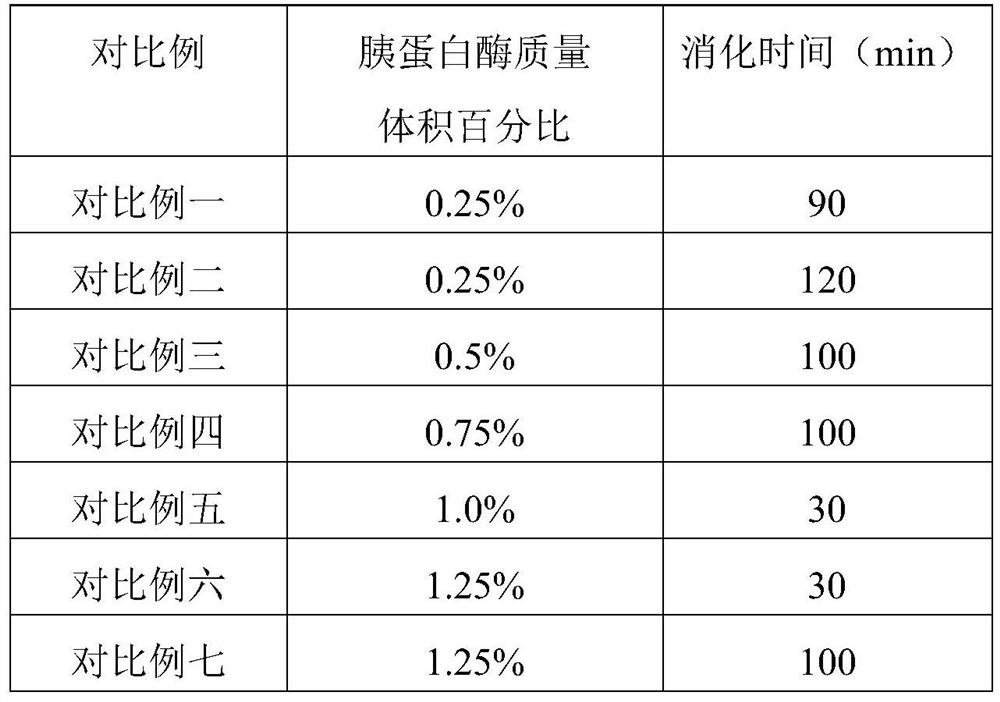Separation and culture method of epidermal stem cells and cell suspension
A technology of epidermal stem cells and culture methods, applied in the field of tissue engineering, can solve the problems of difficult to further improve cell proliferation, limited promotion, and cumbersome operation process, and achieve the effects of shortening digestion time, promoting proliferation and differentiation, and increasing capillaries
- Summary
- Abstract
- Description
- Claims
- Application Information
AI Technical Summary
Problems solved by technology
Method used
Image
Examples
Embodiment 1
[0071] (1) Take the initial skin and pretreatment: under sterile conditions, take about 8cm of the patient 2 For non-wounded skin grafts, put the epidermis face down and the subcutaneous tissue face up in a petri dish pre-added with saline or PBS solution, fix it with surgical forceps, and remove excess subcutaneous fat and fascia with a scalpel. And blood vessel scraping has avoided its impact on the subsequent digestion, so as to obtain the first intermediate skin piece after pretreatment.
[0072] (2) Cleaning: Wash the pretreated skin once with double-antibody (100U / mL penicillin, 0.1mg / mL streptomycin), and then wash 3 times with PBS to obtain the second intermediate skin after cleaning. .
[0073](3) Digestion: put the cleaned skin into the mixed digestion solution containing 0.5% trypsin by mass volume ratio and 0.1% ethylenediaminetetraacetic acid (EDTA) by mass volume percentage, and place it under constant temperature shaking. digestion in the bed. Among them, 2ml...
Embodiment 2
[0079] (1) Take the initial skin and perform pretreatment: under sterile conditions, take about 9 cm of the patient 2 For non-wounded skin grafts, put the epidermis face down and the subcutaneous tissue face up in a petri dish pre-added with saline or PBS solution, fix it with surgical forceps, and remove excess subcutaneous fat and fascia with a scalpel. And blood vessel scraping has avoided its impact on the subsequent digestion, so as to obtain the first intermediate skin piece after pretreatment.
[0080] (2) Cleaning: the pretreated skin was washed once with double antibody, and then washed three times with PBS to obtain the second intermediate skin after cleaning.
[0081] (3) Digestion: put the cleaned skin into a mixed digestion solution containing 0.75% trypsin by mass volume ratio and 0.1% ethylenediaminetetraacetic acid (EDTA) by mass volume percentage, and place it under constant temperature shaking. digestion in the bed. Among them, 2ml of mixed digestive soluti...
Embodiment 3
[0087] (1) Take the initial skin and pretreatment: under sterile conditions, take about 12cm 2 For non-wounded skin grafts, put the epidermis face down and the subcutaneous tissue face up in a petri dish pre-added with saline or PBS solution, fix it with surgical forceps, and remove excess subcutaneous fat and fascia with a scalpel. And blood vessel scraping has avoided its impact on the subsequent digestion, so as to obtain the first intermediate skin piece after pretreatment.
[0088] (2) Cleaning: the pretreated skin was washed once with double antibody, and then washed three times with PBS to obtain the second intermediate skin after cleaning.
[0089] (3) Digestion: Put the cleaned skin piece into a mixed digestion solution containing 1.25% trypsin by mass volume ratio and 0.1% EDTA by mass volume percentage, and place it in a constant temperature shaker for digestion. Among them, 4ml of digestive solution was added to each square centimeter of skin slice, the temperatur...
PUM
| Property | Measurement | Unit |
|---|---|---|
| particle diameter | aaaaa | aaaaa |
Abstract
Description
Claims
Application Information
 Login to View More
Login to View More - Generate Ideas
- Intellectual Property
- Life Sciences
- Materials
- Tech Scout
- Unparalleled Data Quality
- Higher Quality Content
- 60% Fewer Hallucinations
Browse by: Latest US Patents, China's latest patents, Technical Efficacy Thesaurus, Application Domain, Technology Topic, Popular Technical Reports.
© 2025 PatSnap. All rights reserved.Legal|Privacy policy|Modern Slavery Act Transparency Statement|Sitemap|About US| Contact US: help@patsnap.com



